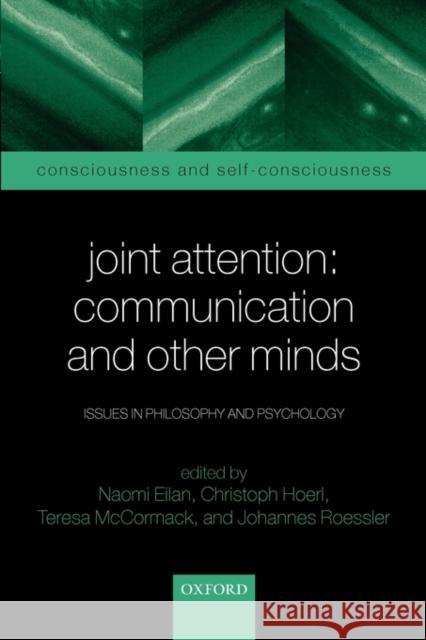Joint Attention: Communication and Other Minds: Issues in Philosophy and Psychology » książka
Joint Attention: Communication and Other Minds: Issues in Philosophy and Psychology
ISBN-13: 9780199245642 / Angielski / Twarda / 2005 / 344 str.
Joint Attention: Communication and Other Minds: Issues in Philosophy and Psychology
ISBN-13: 9780199245642 / Angielski / Twarda / 2005 / 344 str.
(netto: 751,11 VAT: 5%)
Najniższa cena z 30 dni: 769,50
ok. 30 dni roboczych
Dostawa w 2026 r.
Darmowa dostawa!
An international team of psychologists and philosophers present the latest research into the fascinating cognitive phenomenon of "joint attention." Some time around their first birthday most infants begin to engage in a behaviour that is designed to bring it about--say, by means of pointing or gaze-following--that their own and another person's attention are focused on the same object. Described as manifestations of an emerging capacity for joint attention, such triangulations between infant, adult and the world are often treated as a developmental landmark and have become the subject of intensive research among developmentalists and primatologists over the past decade. More recently, work on joint attention has also begun to attract the attention of philosophers. Fueling researchers' interest in all these disciplines is the intuition that joint attention plays a foundational role in the emergence of communicative abilities, in children's developing understanding of the mind and, possibly, in the very capacity for objective thought. This book brings together, for the first time, philosophical and psychological perspectives on the nature and significance of the phenomenon, addressing issues such as: How should we explain the kind of mutual openness that joint attention seems to involve, i.e. the sense in which both child and adult are aware that they are attending to the same thing? What sort of grip on one's own and other people's mental states does such awareness involve, and how does it relate to later-emerging "theory of mind" abilities? In what sense, if any, is the capacity to engage in joint attention with others unique to humans? How should we explain autistic children's seeming incapacity to engage in joint attention? What role, if any, does affect play in the achievement of joint attention? And what, if any, is the connection between participation in joint attention and a grasp of the idea of an objective world? The book a











